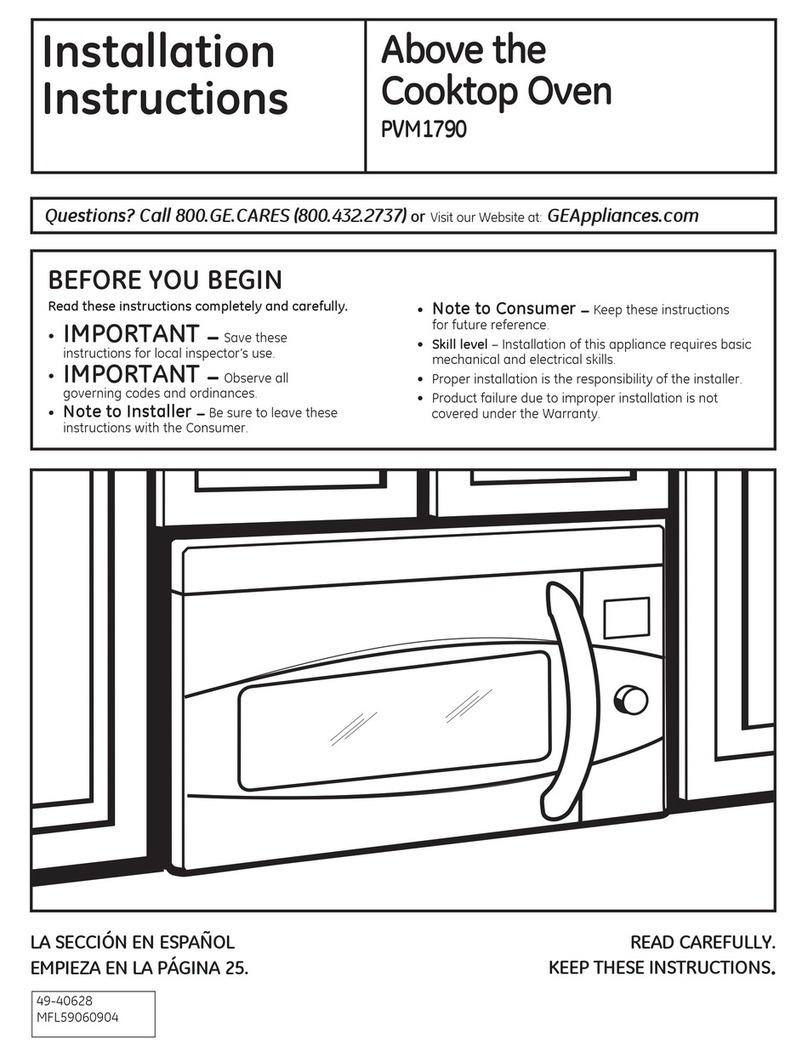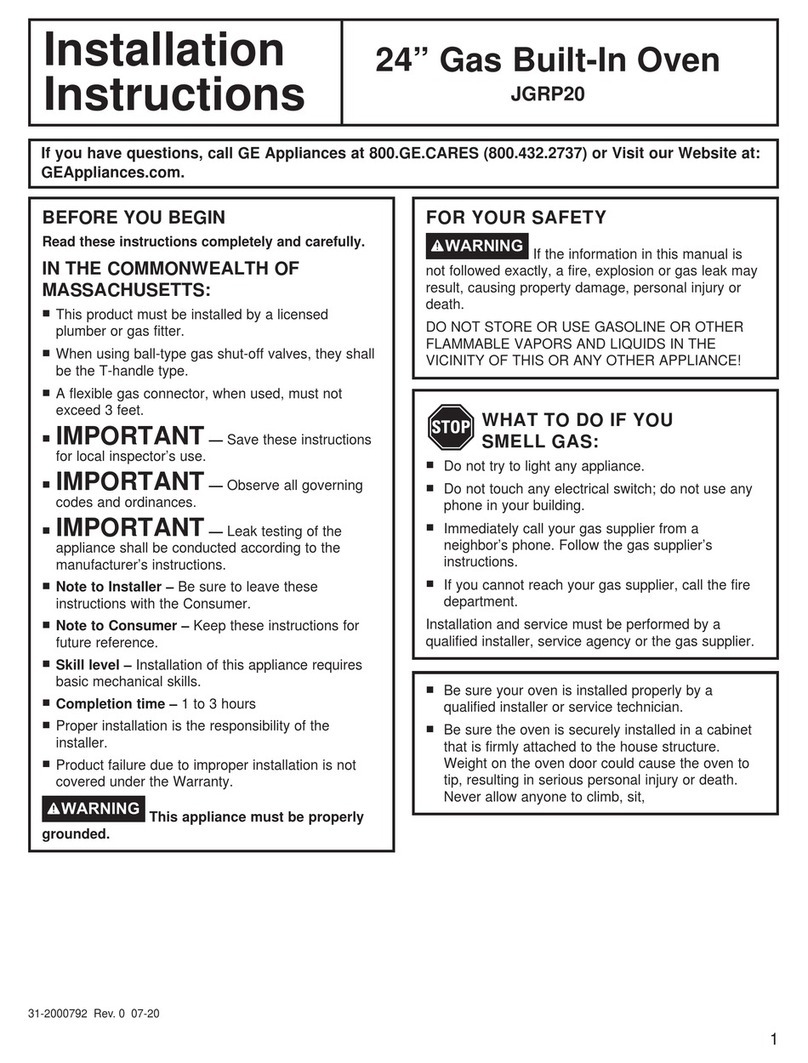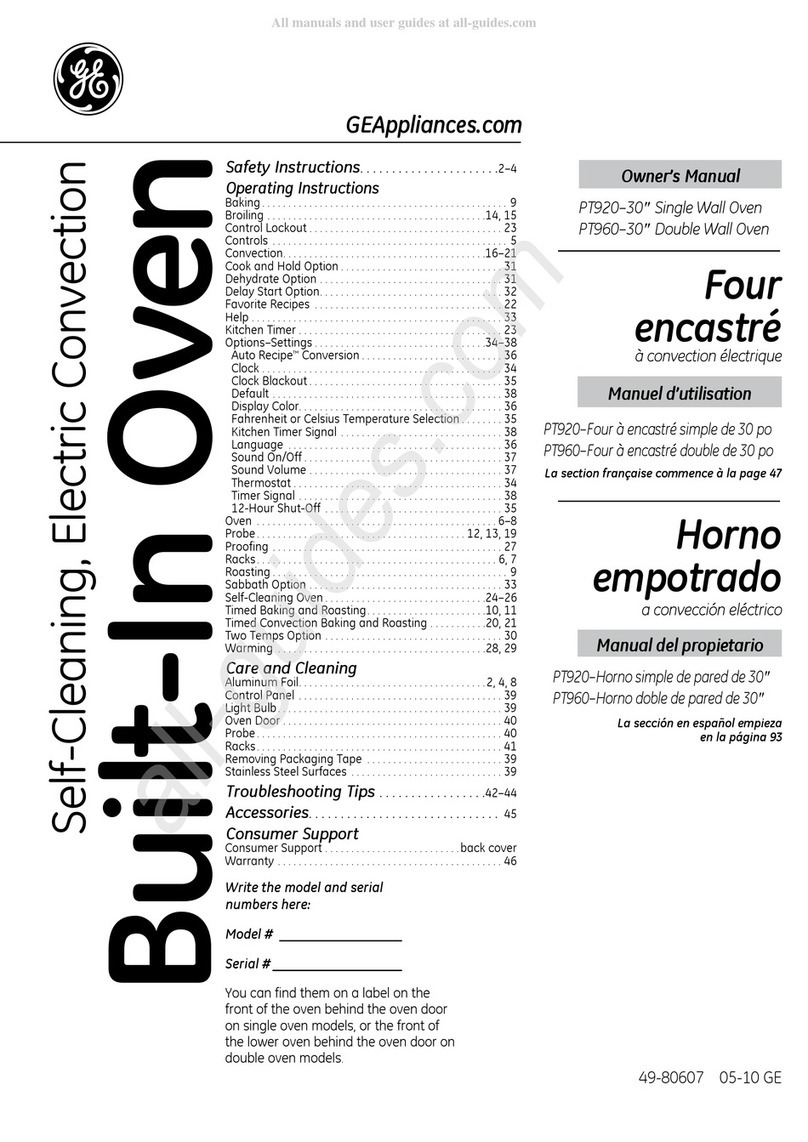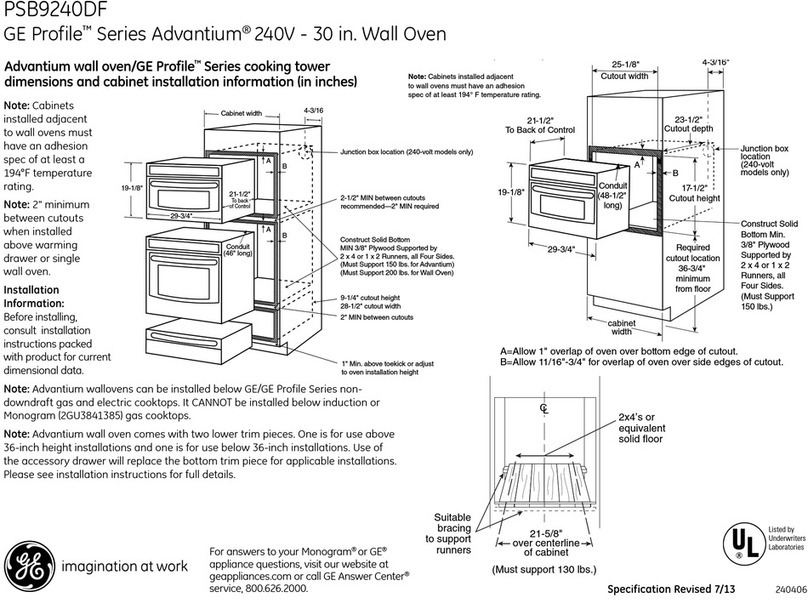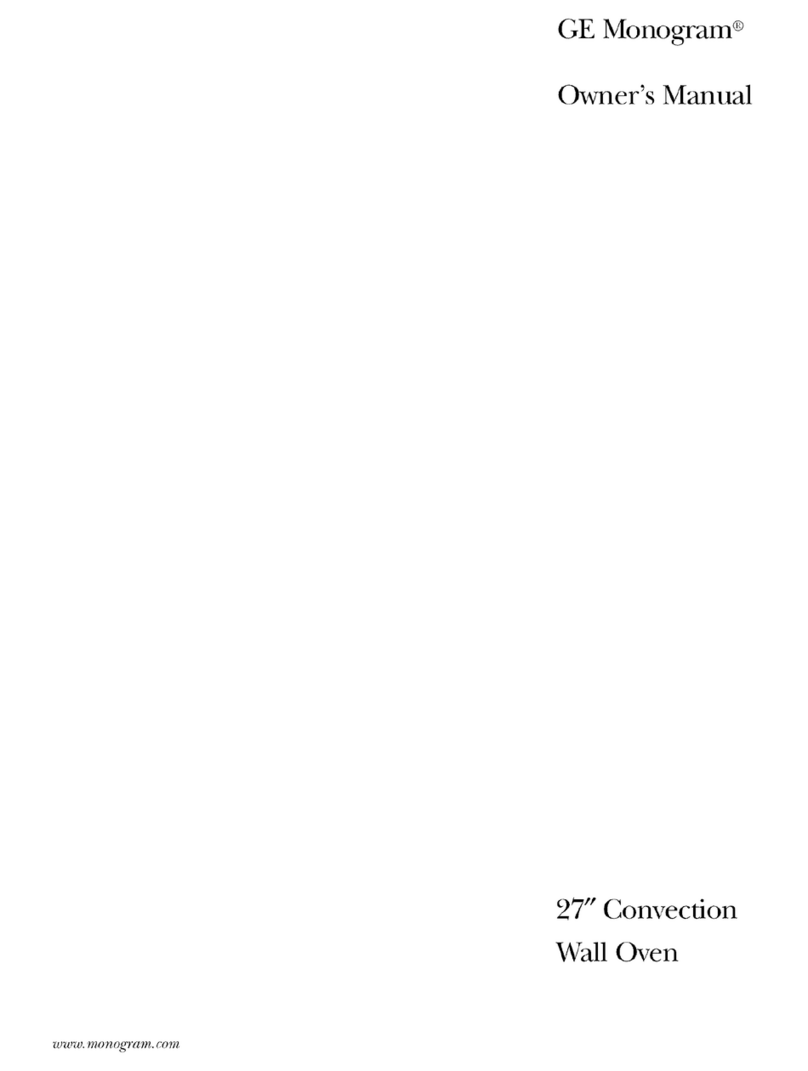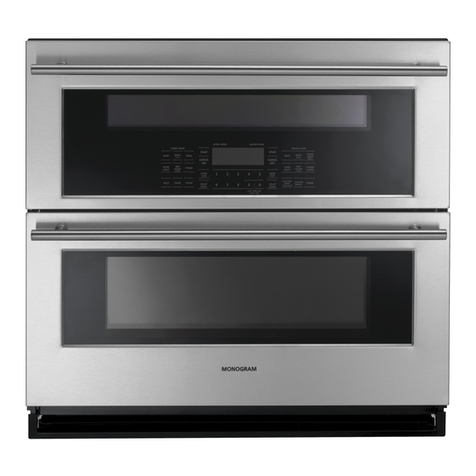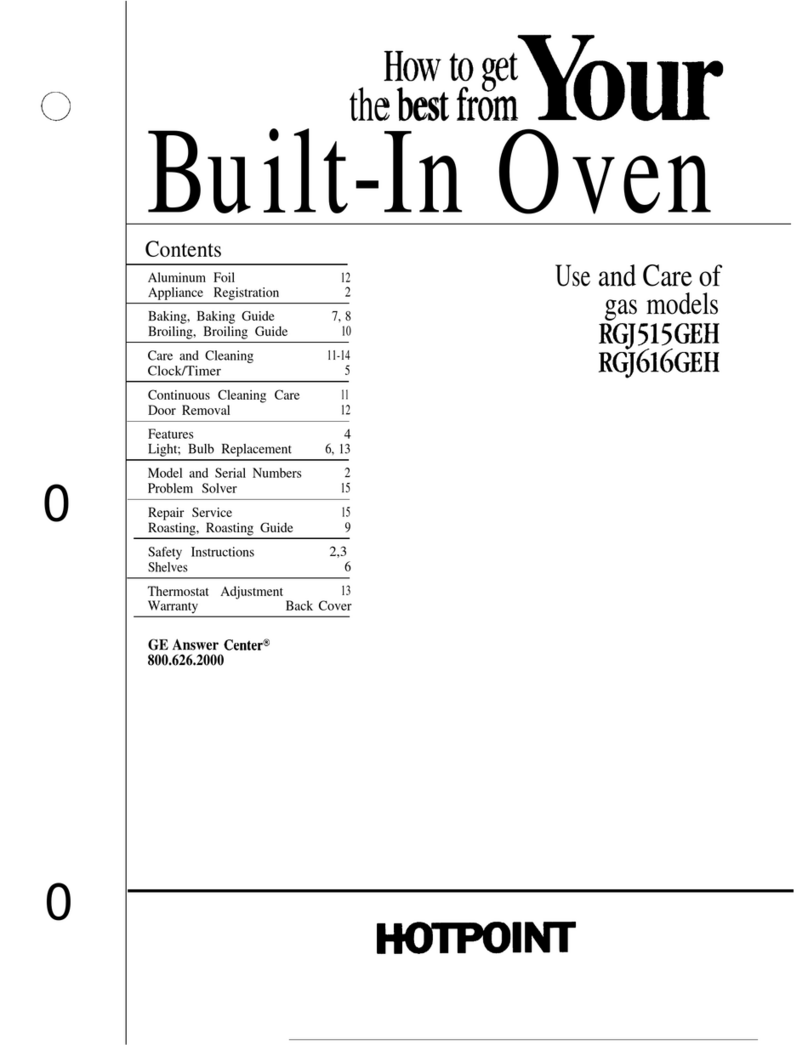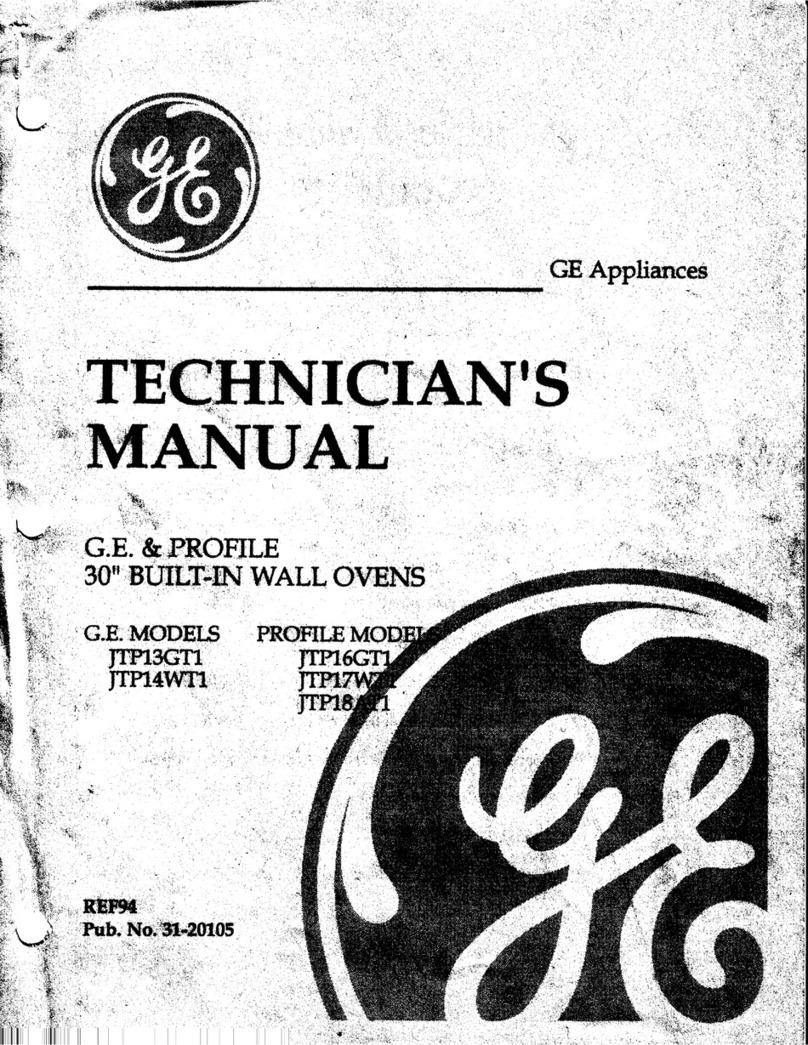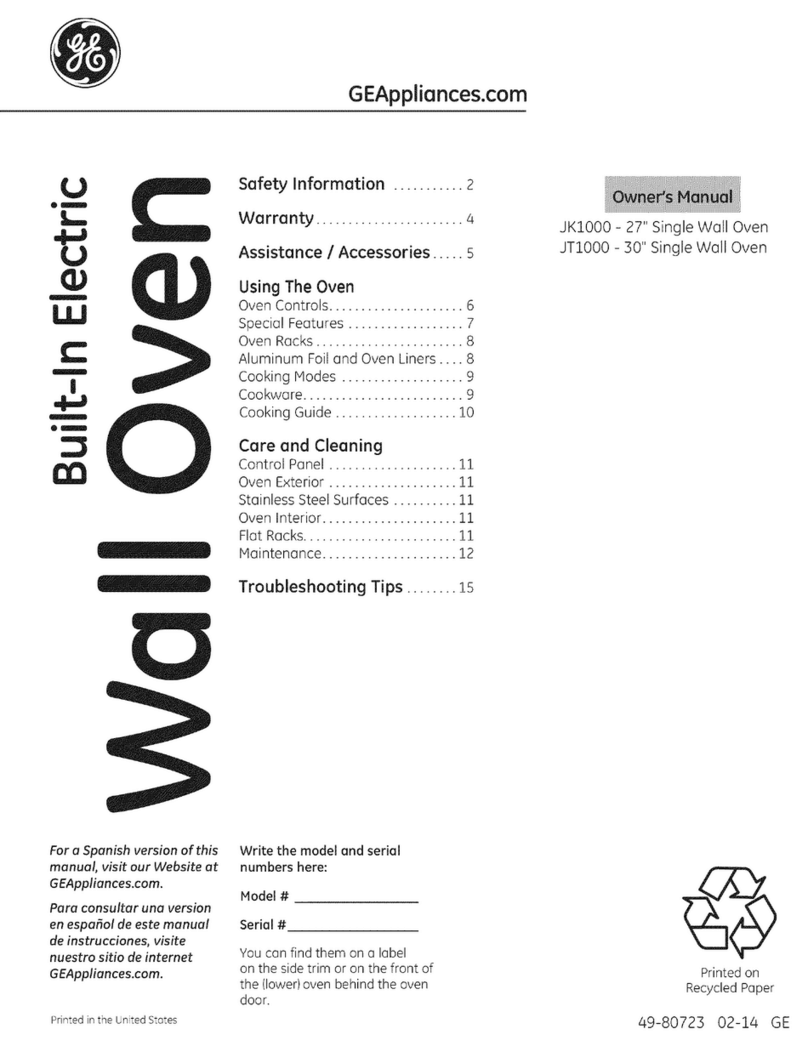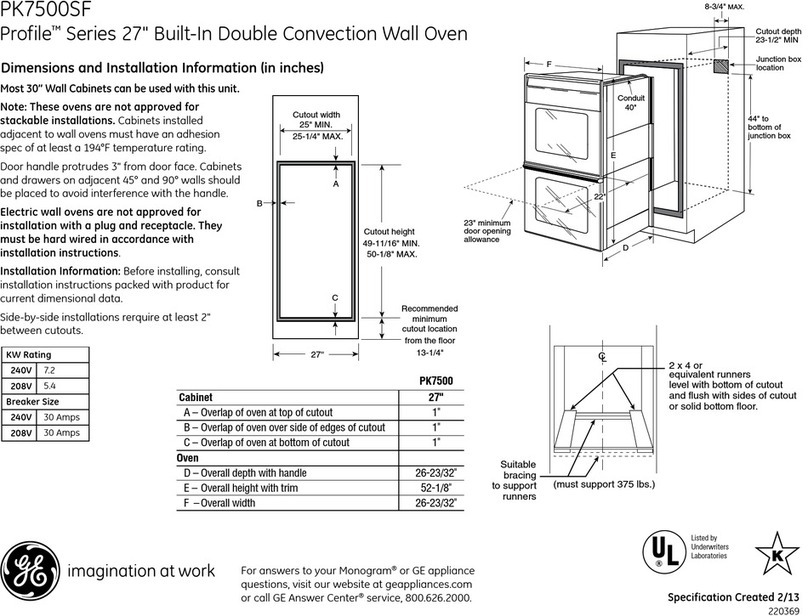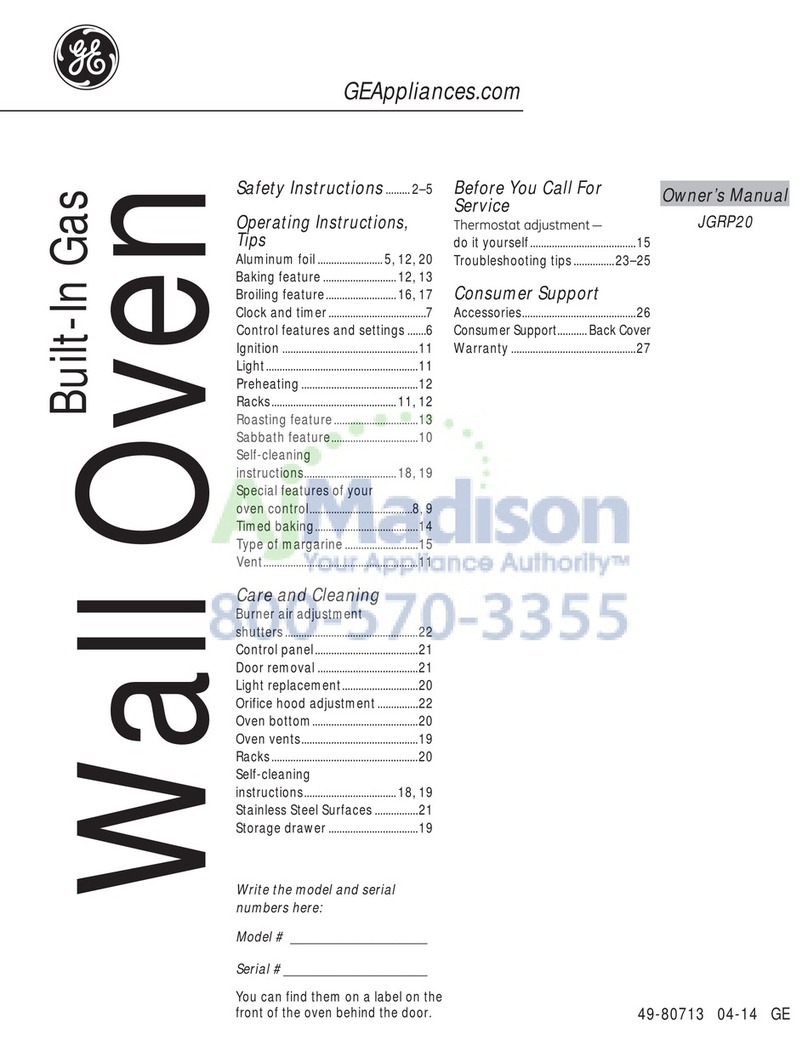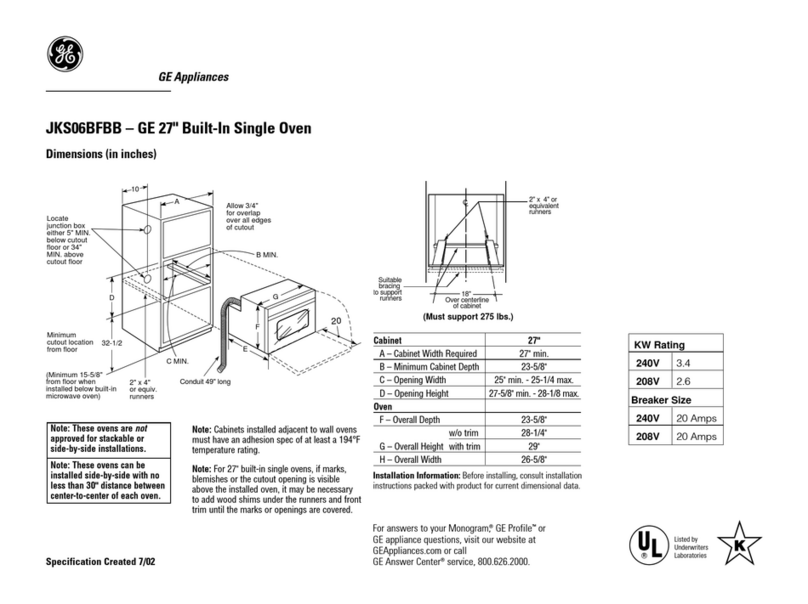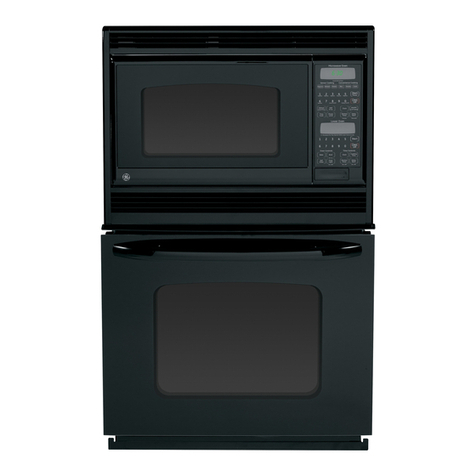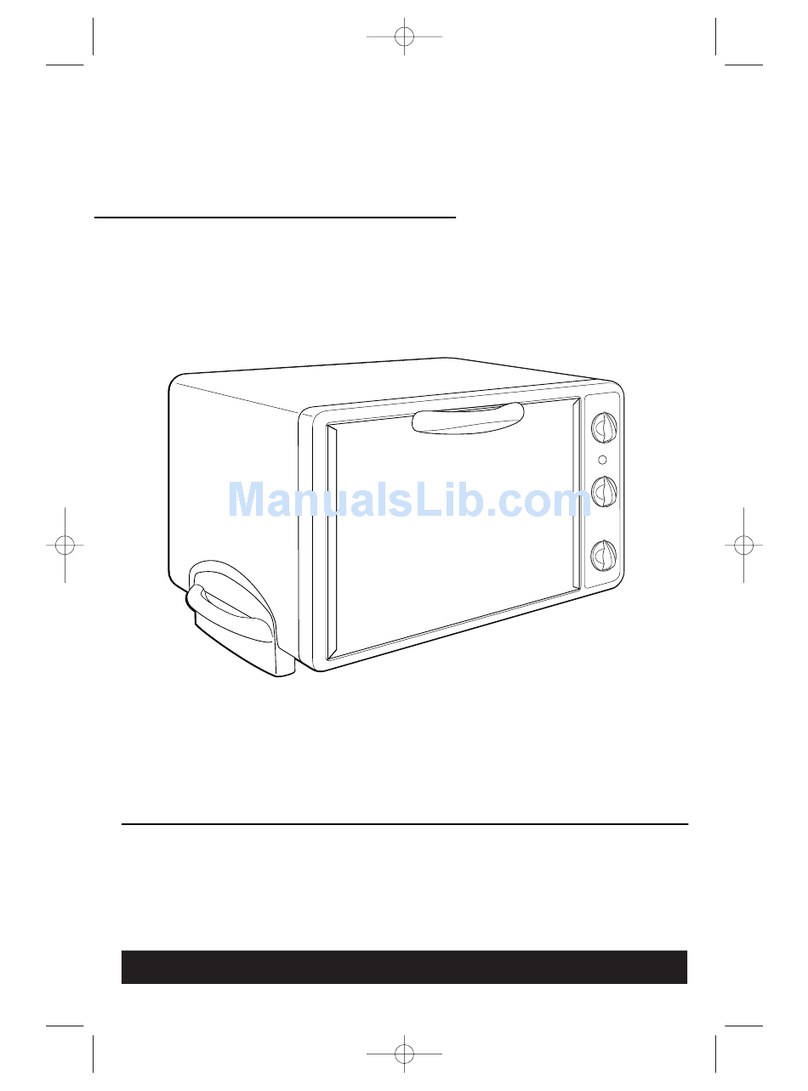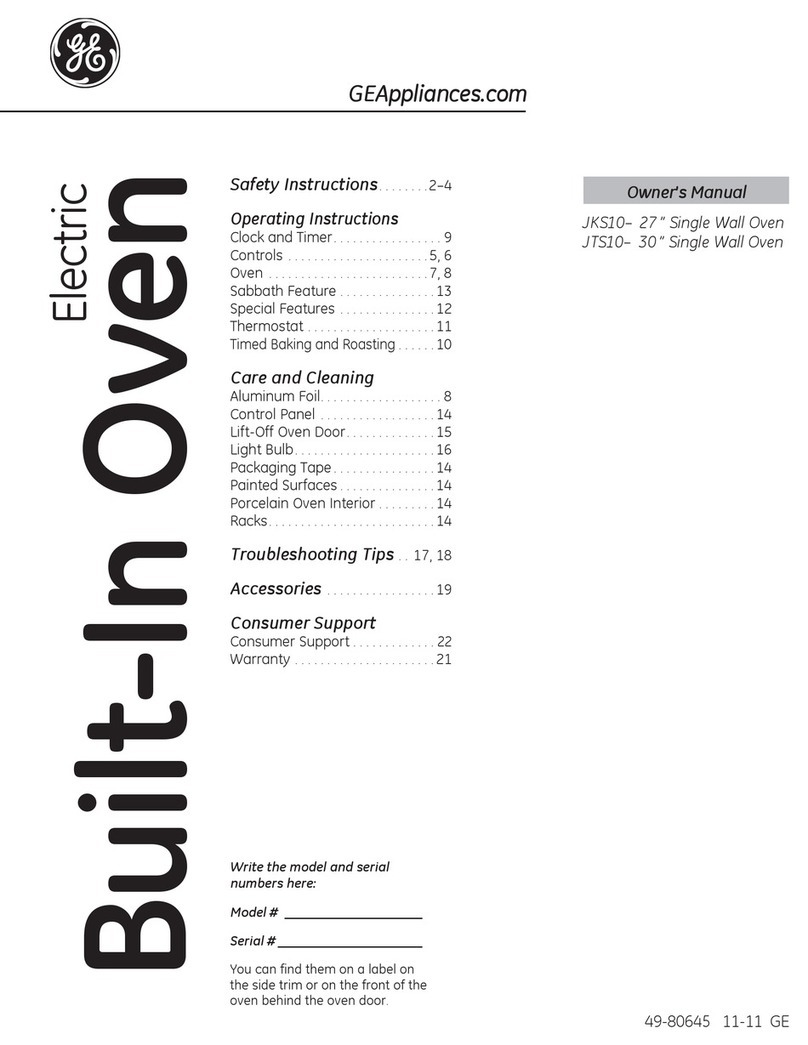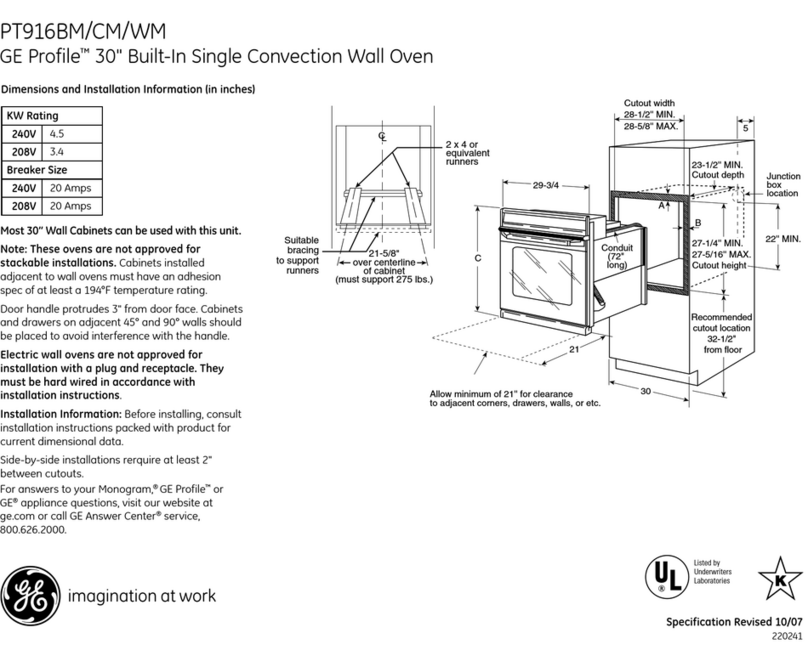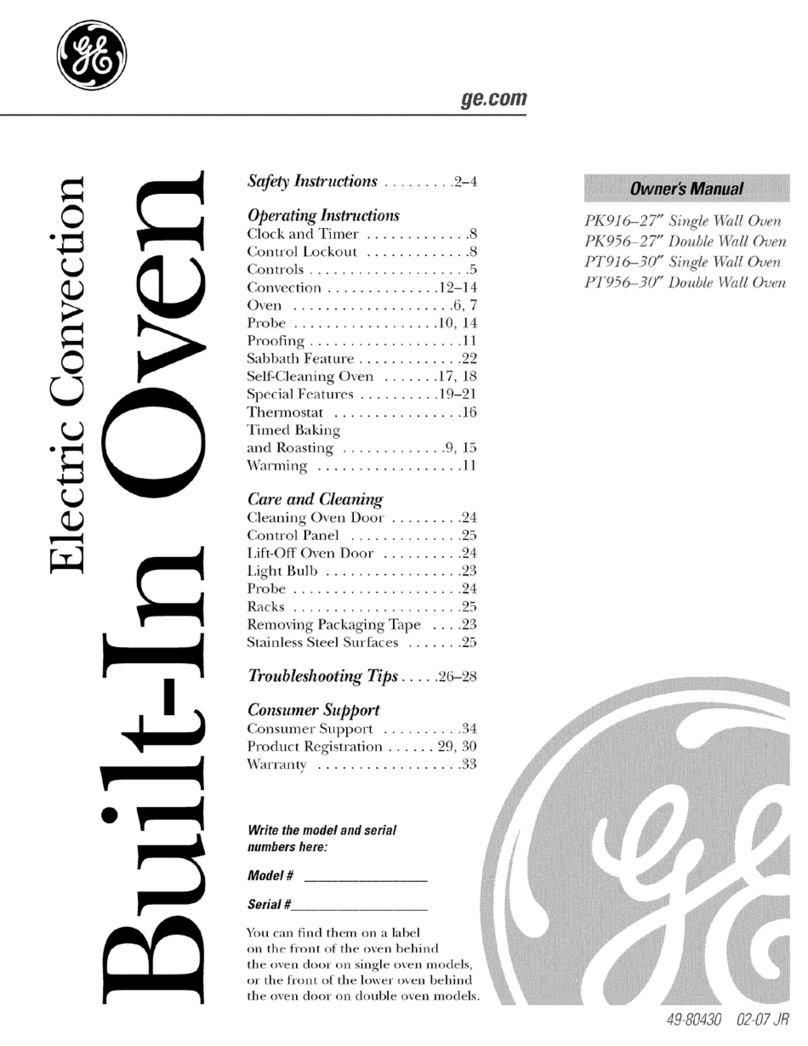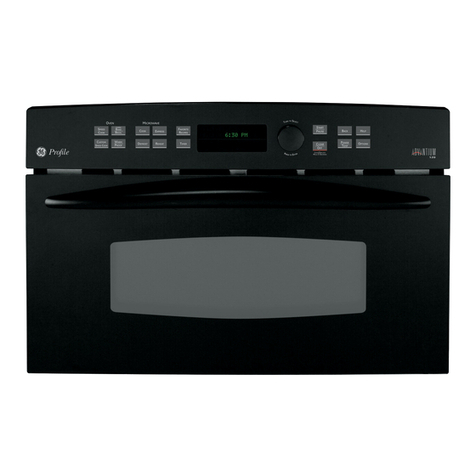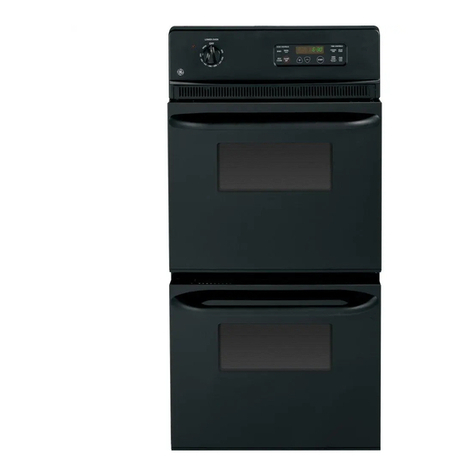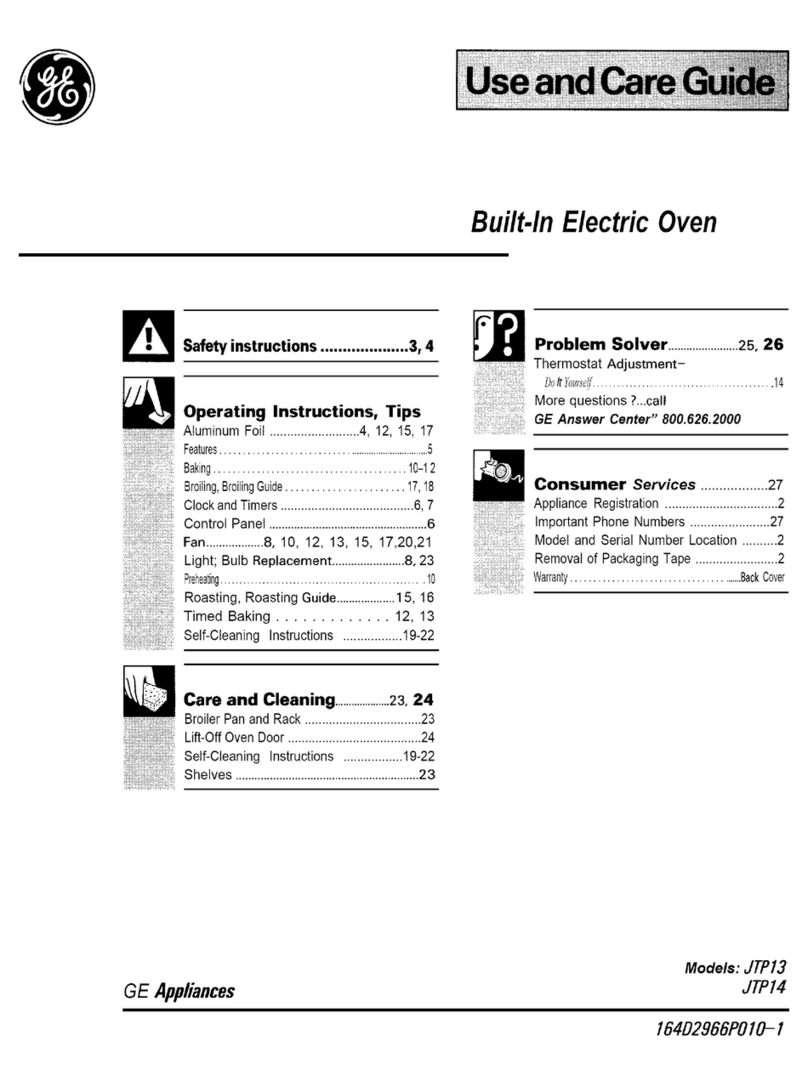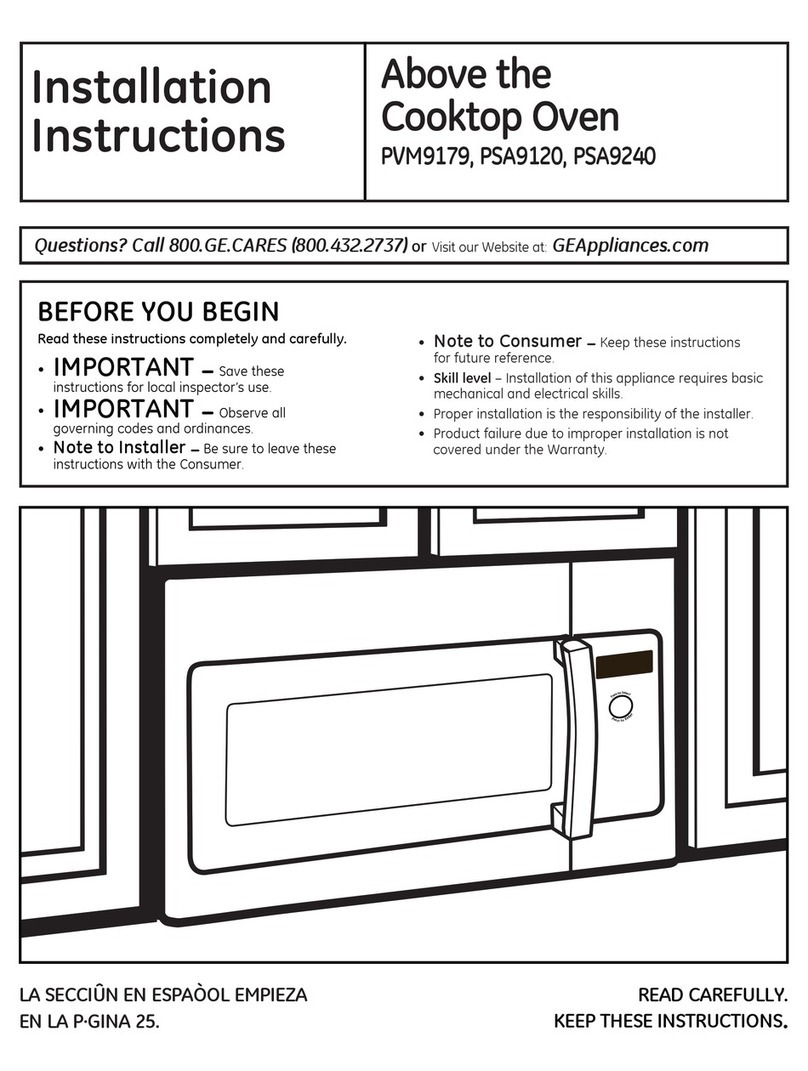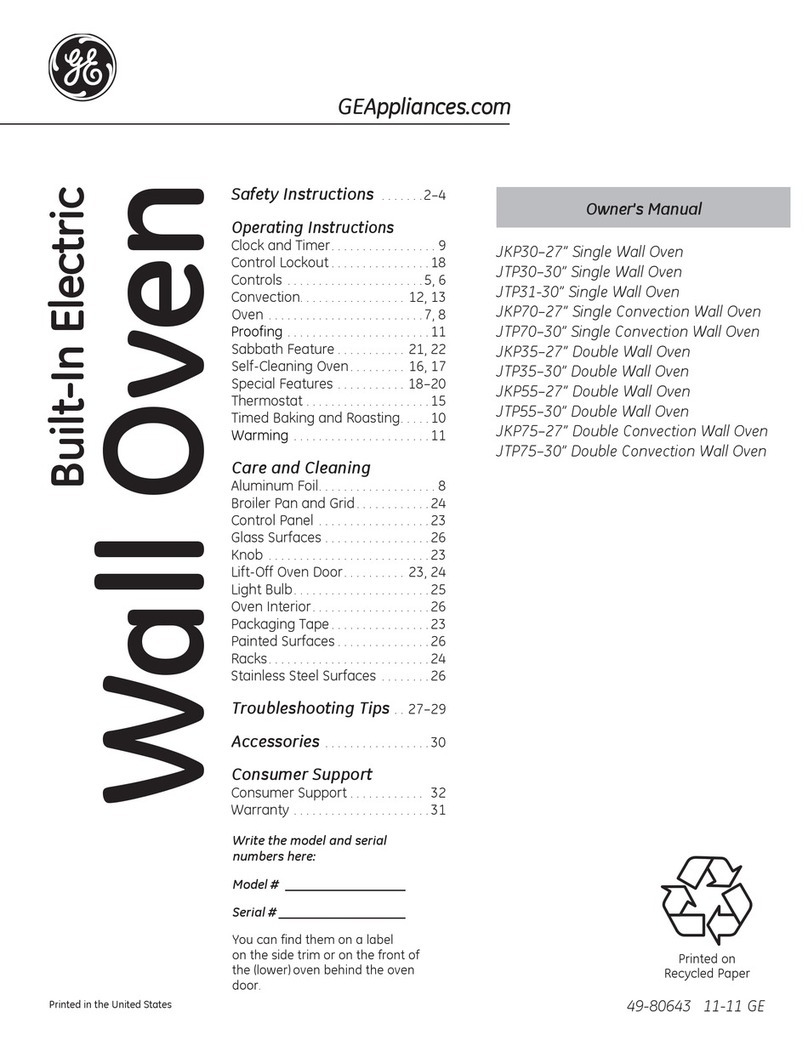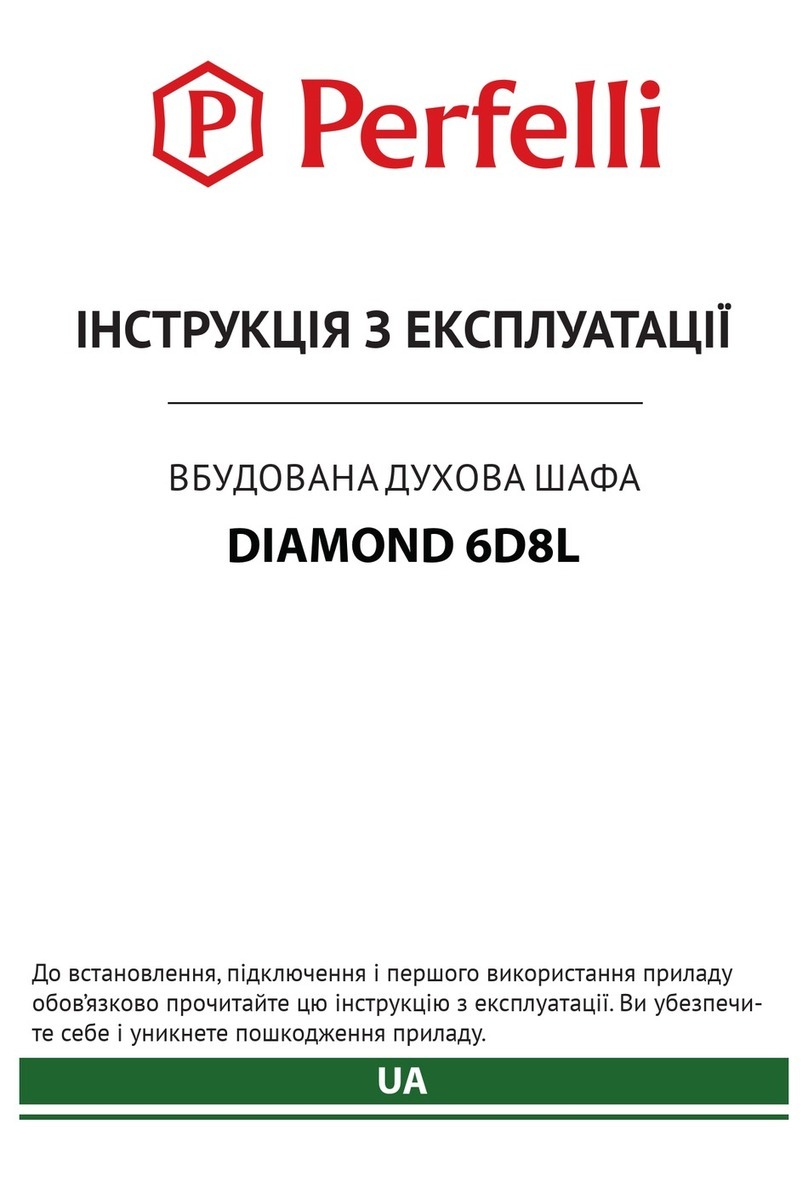Instrucciones de instalacion
Homosdeparedelectricosempotradosde27"y30"
_,Preguntas? Llame al 1,800,GE,CARES (1,800,432,2737) o visite GEAppliances,com
En Canad& Ilame al 1,800,561,3344 o visite www,GEAppliances,ca,
ANTES DE COMENZAR
Lea estas instrueciones por eompleto y (:on
detenimiento.
" IMPORTANTE- Guardeestash<rucciones
para el uso de inspectores locales.
" IMPORTANT - Cumplacon_odoslosoodigosy
ordena nzas vigentes,
• Nota al instalador- Asegurese de dejar estas
instrucciones con el Consumidor,
•Nota al consumidor - Conserve estas
instrueciones para refereneia futura.
• Nivel de destreza - La instalacion de este
aparato requiere un instalador o electrieista
ealifieados.
•El instalador tiene la responsabilidad de
efectuar una instalacion adecuada.
, La garantia no cubre las fallas del producto
provocadas por una instalacion incorrecta.
, Este producto solo se debe usar en areas
interiores.
ATENCIONINSTALADOR:Todosloshornosde paredeledricosdebencontarconcableadodeconexbnpermanente
(cablead0direct0)dentr0deunacajadec0nexi0nesapr0bada.Enest0spr0ductosNOsepermitelac0nexi0ndeltip0"enchufeyrecept4cul0",
PARA SU SEGURIDAD:
A ADVERTENCIA:Antesdecomen=a,,a,nsta,adondescone te,aener ,a
del panel de servicio y bloquee los medios de desconexion para evitar el accionamiento de la energia de manera
accidental. Cuando los medios de desconexion de servicio no pueden bloquearse, coloque sobre
el panel de servicio un clispositivo de advertencia bien visible, como una etiqueta.
El horno debe instalarse bien en un gabinete que se encuentre firmemente sujeto a la estructura de la casa. Sise
coloca peso sobre la puerta del horno, este puede volcarse y provocar lesiones. Nunca permita que nadie se sub&
siente, pare o cuelgue de la puerta del horno.
Verifique que el revestimiento de las paredes, mostradores y gabinetes ubicados alrededor del horno puedan
soportar el calor (hasta 200°F [93,3°C]) generado pot el horno.
MATERIALESQUEPUEDENECESITAR
Caja de conexiones
lapones de alambre
Abrazadera de alivio de tensi6n para condudo de 1/2"
HERRAMIENTAS NECESARIAS
Broca de perforadora de 1/8" y perforadora
electrica o de mano
Destomillador de T20
Destornillador de estrella
Alicates pelacables
r-_ QUITE LOS MATERIALES DE EMPAQUE
No quitar los materiales de empaque puede provocar danos al electrodomestico. Quite todas las partes de
empaque del homo, bandejas y elementos de calentamiento. Quite la pelicula protectora y las etiquetas de
la puerta exterior y panel de control. Tambien, quite los elementos pk_isticos de los rebordes y panel, toda la
cinta que cubre el homo y los tornillos de envio que f ijan el homo a la almohadilla base. Abra la puerta del
homo y quite el material informativo y las bandejas del horno. Quite el reborde inferior de la parte superior del
horno. Se colocara al final del proc_o de instalacion. El reborde se encuentra envuelto en forma separada y
adherido en la parte superior de la unidad. Retire los rieles del pedestal de la caja que esta aparte y dejelos a
un costado (Hornos con Pared Doble de 30 _'Unicamente).
INFORI'4ACI6N DE DISE--O
INSTALACIONES DE HORNO UNICO
El horno unico puecle instalarse solo en un gabinete o sobre un cajon calentador. El homo Linico tambien
puede instalarse debajo de un mostrador de encimera o debajo de las estufas especificadas. Yea la
etiqueta de la parte superior del homo para consultar los modelos aprobados.
INSTALACIONES DE HORNO DOBLE
Puede instalarse un horno doble solo en un gabinete o sobre un cajon calentador. Yea la etiqueta de la
parte superior del horno para consultar los modelos aprobados.
IMPORTANTE: Siempre consulte las instrucciones de instalaciones individuales enviadas con cada producto
para requerimientos especificos.
IZi PREPARELA ABERTURA
NOTA: Si el gabinete no cuenta con un rondo solido,
deben instalarse dos abrazaderas o guias para
soportar el peso del homo. Para hornos Qnicos, las
guias o abrazaderas deben soportar 200 Ibs (91 kgs).
Para hornos dobles, las guias o abrazaderas deben
soportar 375 Ibs (170 kgs).
NOTA: Si mareas, imperfecciones o la abertura
resultaran visibles sobre el homo instalado, puede
set necesario agregar cunas de madera bajo las
guias y el reborde frontal hasta eubrir las mareas
o la abertura.
NOTA: Si el gabinete no euenta (:on un armazon
frontal y los lados son menores a un grosor de 3/4"
(1,9 cm), coloque cunas uniformemente sobre ambos
lados para establecer al aneho de la abertura.
Abrazaderas
adecuadas
para sostener
las gums
Gu_as de 2"x 4" (5 cm x 10 cm)
oequivalentes anivel con
el rondo del recorte
y niveladas
costados de _abertura
